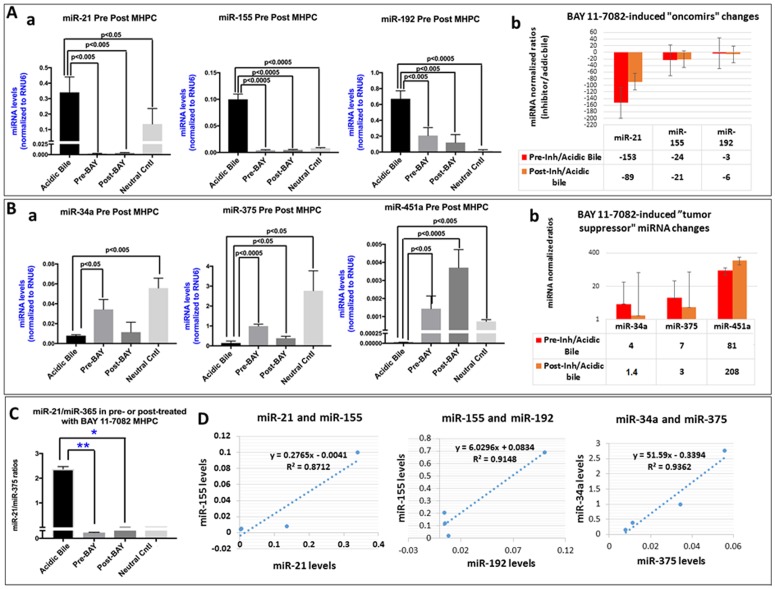Figure 5. Pre- or post-application of BAY 11-7082 inhibits the acidic bile-induced deregulation of cancer-related miRNA markers, in MHPC.
(A) Pre- or post-application of MHPC with BAY 11-7082 inhibits the acidic bile-induced (a) upregulation of the analyzed “oncomirs” miR-21, miR-155 and miR-192, demonstrated by significantly lower miRNA levels, compared to acidic bile-treated alone (p values by t-test; mean ±SD; multiple comparisons by Holm-Sidak; GraphPad Prism 7.0). (b) Graphs depict the BAY 11-7082-induced expression changes of each “oncomir” miR-21, miR-155 and miR-192 in MHPC (pre- or post-application relative to acidic bile alone) (normalization control: small RNA RNU6B). (B) Pre- or post-application of MHPC with BAY 11-7082 suppresses the acidic bile-induced (a) downregulation of the analyzed “tumor suppressor” miRNAs, miR-34a, miR-375, miR-451a, demonstrated by significantly higher acidic bile-alone (p values by t-test; mean±SD; multiple comparisons by Holm-Sidak; GraphPad Prism 7.0). (b) Graphs depict the BAY 11-7082-induced expression changes of each “tumor suppressor” miR-34a, miR-375 and miR-451a, in MHPC (Pre- or post-application relative to acidic bile alone) (Normalization control: small RNA RNU6B). (C) Pre- or post-application of BAY 11-7082 induces significantly lower miR-21/375 ratios in MHPC, compared to acdic bile alone (p values by t-test; mean ±SD; multiple comparisons by Holm-Sidak; GraphPad Prism 7.0). (D) Diagrams show significant linear correlations by Pearson analysis, between miR-21 and miR-155, miR-155 and miR-192, and miR-34a and miR-375 (by Pearson analysis, p value < 0.05).

